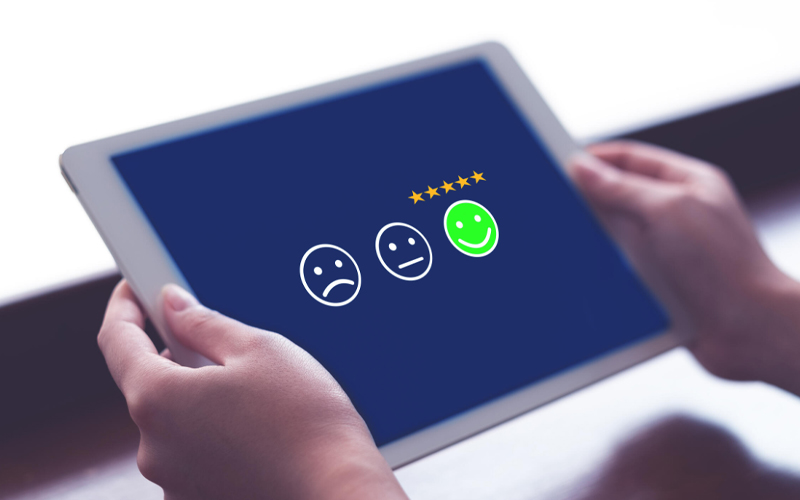Understanding Public Relations
Personalisation matters more than ever now with the increasing number of digital natives. Personalisation boosts performance and delivers positive customer outcomes. In fact statistics show that fast growing organisations earn 40 per cent more because of personalisation when compared to others who do not focus on personalisation. Further, almost 71 per cent consumers, in a Nielson report, admitted that they expect personalised interactions with organisations. Consumers are willing to move their business elsewhere if the experience is not personalised enough. However, this does not mean consumers want to see ads of a product they searched for or bought days ago, keep popping up whenever they are online.
What is hyper-personalisation?
Hyper-personalisation is a supercharged form of personalisation. It analyses all the data about a customer from all available sources and churns out a detailed understanding of the customer’s behaviour. Three things that enable hyper-personalisation are the increasing amounts of data available with businesses, artificial intelligence (AI) which sorts the data and helps in making decisions, and finally automation which makes it possible to gather data and analyse it so that businesses gain useful actionable intelligence from it.
Hyper-personalisation is all about anticipating, streamlining and even surprising customers at the right time with suggestions or solutions to fulfil defined needs or overcome challenges. It is all about the customer, first and always. Analytics and AI help in predicting customer needs, ideally before the customer even makes a request.
The importance of data cannot be stressed enough. To create a hyper-personalised experience, businesses must harness data. The tools needed to utilise data and to create a rich and relevant experience for customers are all available and it is up to marketing leaders to make the best use of them.
Hyper-personalised marketing emails
Emails are one of the most widely used online marketing mediums. However, marketing emails frequently end up in the spam folder. Marketers must personalise their marketing emails smartly to ensure that emails stay out of spam folders and are opened. Attributes of effective hyper-personalised email marketing include relevance of the products being marketed, timely communication and messages that are specific to consumer needs. Here are some actionable details.
Five strategies to hyper-personalise email marketing
- Gather data, and then gather some more:
- Customise your marketing content:
- Optimise the subject of the email:
- Include the sender and receiver’s names:
- Send emails at the right time:
To increase the chances of consumers opening marketing emails, organisations should start by sending personalised emails to consumers who they have interacted with. In other words, it is better to build email lists from first-party data rather than from third-party sources. A 2021 Nielson marketing report found that 86 per cent of marketers surveyed agreed that first-party data was the best data. However, the limitation of first-party data is that the behaviour of a consumer with other brands remains unknown. Marketers must make efforts to gather other data too to understand consumer behaviour in all its dimensions. The more granular the data, the more hyper-personalised a marketing campaign can be.
Marketers should use email segmentation to connect with customers as per their interests. Customers could be segmented by location, demographic information, past purchases and stage of purchase journey. For instance, customers of a neighbourhood retail store would receive promotional emails specific to their store. A hyper-personalised email however, would need to have more details, such as offers on specific items in the customer’s last grocery shopping list. Or it could rank the popularity of various brands of a product in a shopping list.
Hyper-personalised email subjects attract recipients and are more likely to be opened. To optimise the subject line, marketers must know their audience well. Further, certain spam triggers should be avoided. For example, using all caps, over punctuated sentences, too many superlatives such as amazing, unbelievable, using synonyms of ‘free’ such as free offer, and money related phrases such as money back, cash back and so on. It is far better to use local references. Making sure the customer’s name is in the subject line is a big attraction.However, including just the name is not hyper-personalised enough. A more specific detail should be added to make the customer feel the email is only for him or her. For example, a statistic with information about the distance travelled by the customer with a cab service. Or a reminder about when a product was purchased last and perhaps it was time to buy it again. Online grocery shopping sites frequently use this method.
Random email addresses seem like spam and are likely to be ignored. Both the sender and receiver’s names should be mentioned so that the email feels personal and not spam. Adding names also prevents the email program from sending the email to the spam folder. For example, reading the sender’s name in a marketing email makes it more personalised.
Personalising the timing of emails is important. Acknowledging birthdays, anniversaries, loyalty milestones or any other special date improves the response rate of marketing emails. Customers also appreciate promotional emails at the right time. In fact, the timing of the email could be as specific as a time of the day. For example, when a consumer is known to browse a shopping site every other day at a certain time, an email with related information and offers could be sent at the same time. The consumer is very likely to open the email and even make a purchase. Trigger events can be used to automate certain hyper-personalised emails. For example, abandoned shopping carts or search and browse exercises can trigger event-specific emails. Filling an inbox with irrelevant advertisements can be quite annoying.
End note
Hyper-personalisation does not mean that a customer’s personal information is so detailed that the customer finds the marketing content to be almost creepy. AI models must be designed well so that sensitive bits of information can be identified and either included or excluded from marketing efforts, depending on the nature of the information.
* For organizations on the digital transformation journey, agility is key in responding to a rapidly changing technology and business landscape. Now more than ever, it is crucial to deliver and exceed on organizational expectations with a robust digital mindset backed by innovation. Enabling businesses to sense, learn, respond, and evolve like a living organism, will be imperative for business excellence going forward. A comprehensive, yet modular suite of services is doing exactly that. Equipping organizations with intuitive decision-making automatically at scale, actionable insights based on real-time solutions, anytime/anywhere experience, and in-depth data visibility across functions leading to hyper-productivity, Live Enterprise is building connected organizations that are innovating collaboratively for the future.







